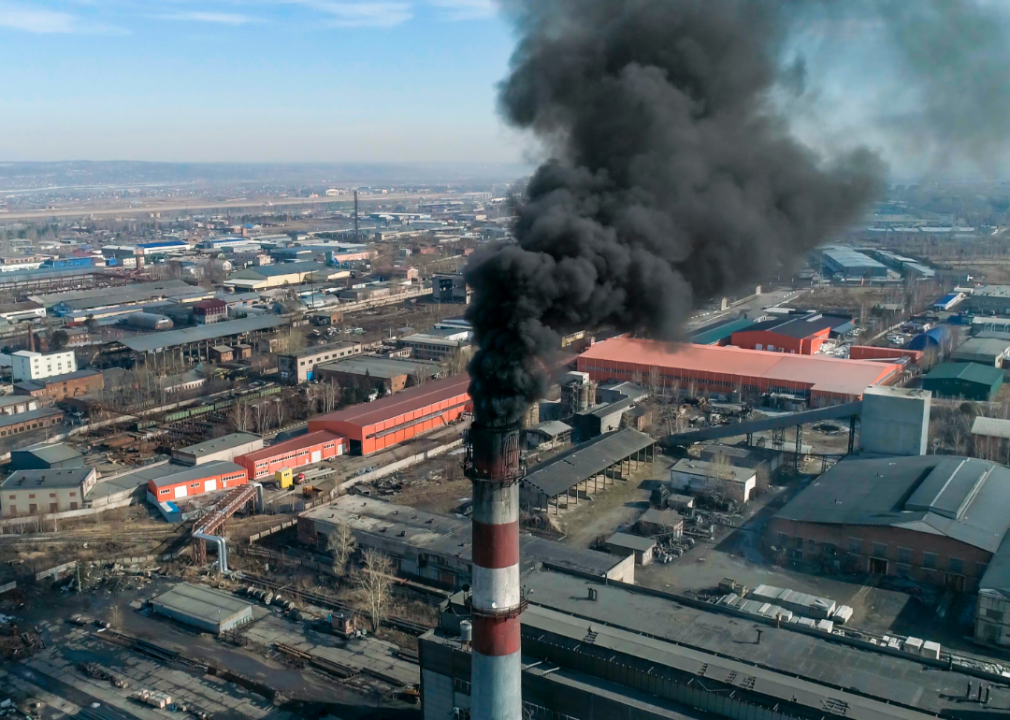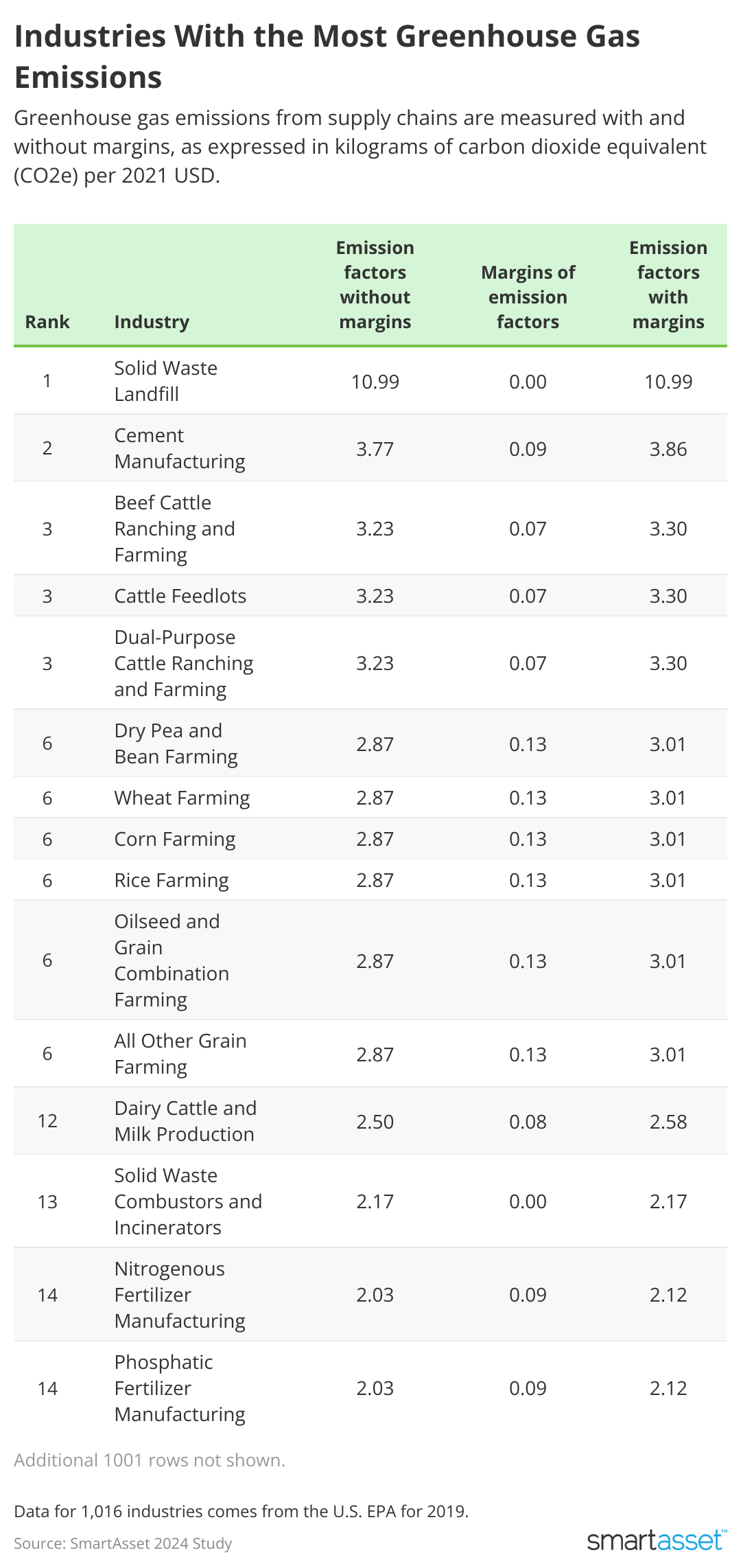These industries are responsible for the most greenhouse gas emissions

Panksvatouny // Canva
These industries are responsible for the most greenhouse gas emissions
dark smoke rises out of smokestack of coal-fired plant
While industries could drive the growth of local economies, high emissions can also have a negative impact on the environment of those markets and put the overall economic and social health of those communities at risk. Examining emissions levels may help communities understand the total impact and tradeoffs associated with local industries, as well as help inspire innovations to reduce emissions.
With these factors in mind, SmartAsset ranked 1,016 industries based on the estimated greenhouse gas emissions generated by individual supply chains, measured in equivalent kilograms of CO2 (CO2e) per dollar spent.
![]()

SmartAsset
Key findings
table showing top 25 industries with the most greenhouse gas emissions
- Solid waste landfills contribute more than three times the greenhouse gas emissions of the second-ranking industry. An estimated 10.99 kg of CO2 equivalent is emitted from the solid waste landfill industry. No other industry emits more than 3.8 kg of CO2 equivalent.
- In manufacturing, cement and fertilizer are the biggest emitters of greenhouse gases. Cement manufacturing is the second-biggest emitter of greenhouse gasses across all industries. Fertilizer production – particularly nitrogenous and phosphatic fertilizers, as well as the mixing of fertilizers – also tie for 14th place across all industries, generating about 2.03 kg of CO2e each.
- Among recreational hobbies, these emit the most greenhouse gases: Golf courses and country clubs, skiing facilities, marinas, bowling centers, and fitness and recreational sports centers emit about 0.31 kg CO2e. By comparison, hotels, casinos, museums, food service, amusement parks, sports teams, and clubs emit just a fraction of that.
- The cattle and beef industry contributes some of the highest emissions rates. Beef cattle ranching and farming, cattle feedlots, and dual-purpose cattle ranching and farming each contribute an equivalent of 3.23 kg of CO2, tying for the third-most prominent industry for greenhouse gas emissions. Other prominent emitters in farming include dry peas and beans, wheat, corn, rice, oilseed, and grain – each of which contributes an estimated 2.87 kg of CO2e.
- Artists have particularly low emissions impacts. Independent artists, writers, and performers collectively only emit the equivalent of 0.013 kg of CO2e. Music publishers, sound recording studios, record production and distribution, and other sound recording industries similarly come in at only about 0.026 kg each. Many insurance-related industries, including claims adjusting and agencies and brokerages, also emit particularly low levels of emissions (0.034 kg).
- Bottled water manufacturing generates more greenhouse gasses than tobacco manufacturing. The bottled water supply chain is estimated to be responsible for about 0.322 kg of carbon dioxide equivalent, while tobacco manufacturing contributes 0.073 kg.
- Financial advice and management has very low associated emissions. Financial advisors, which fall under the investment advice industry, contribute 0.062 kg of CO2e, ranking near the bottom of the list. Other aspects of financial management including portfolio management, trust, fiduciary and custody activities, and securities brokerages have similarly low emissions.
Data and methodology
This study ranked 1,016 commodities as defined by the 2017 North American Industry Classification System (NAICS) according to the most recent data on the respective supply chain’s greenhouse gas emissions without margins, as expressed in kilograms of carbon dioxide equivalent (CO2e) per 2021 USD. Emissions data is from 2019. Data comes from the United States Environmental Protection Agency.
This story was produced by SmartAsset and reviewed and distributed by Stacker Media.





